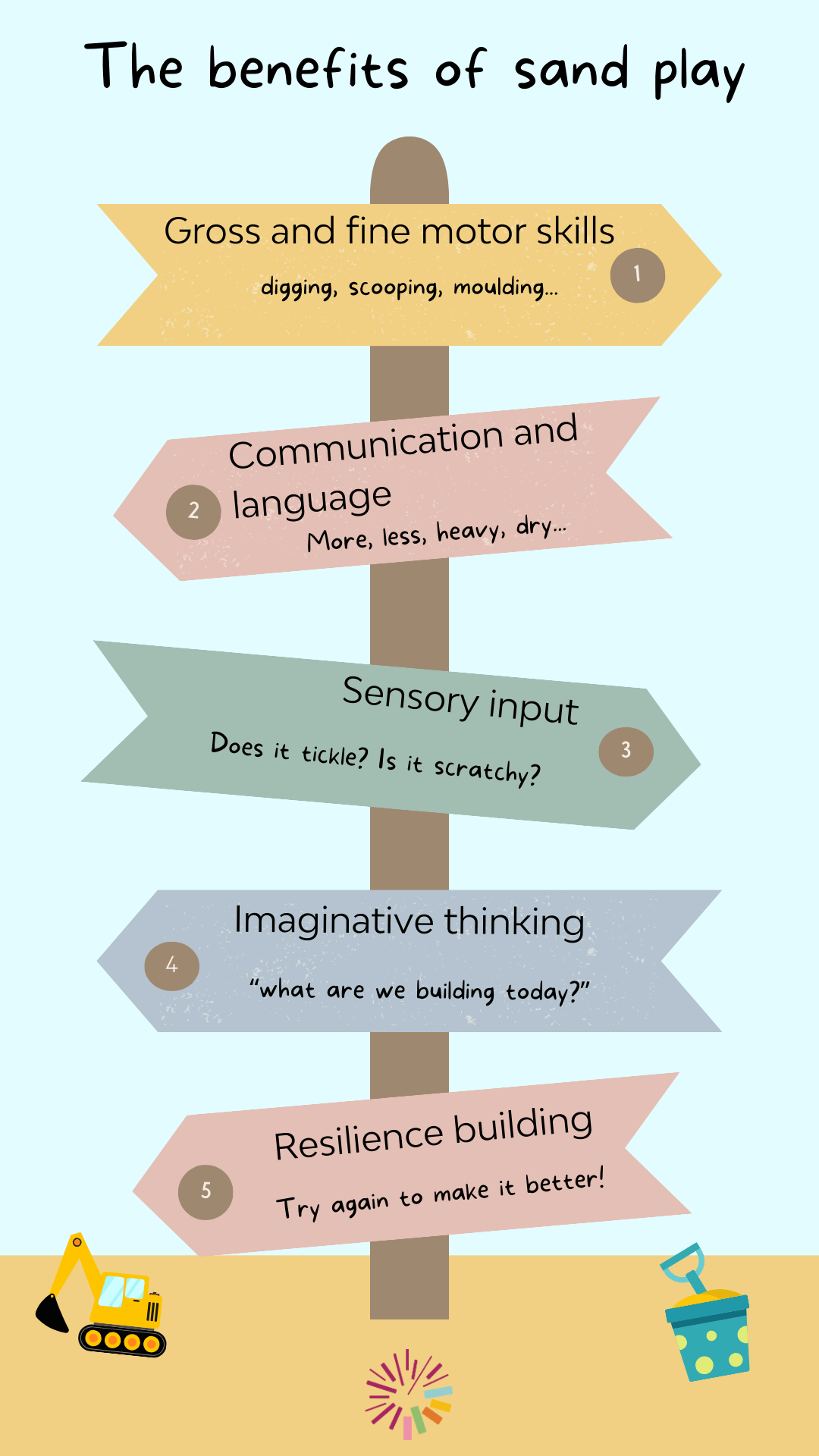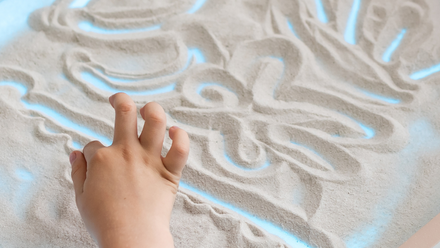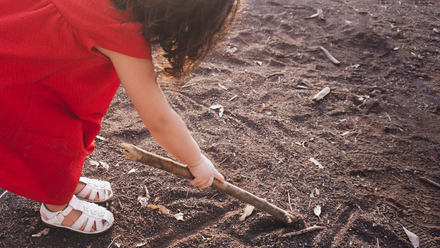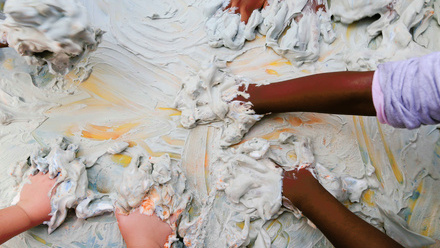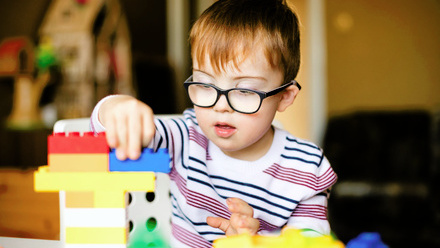The benefits of sand play
Playing with sand is a multi-sensory experience that brings with it a host of benefits for children’s development.From babies exploring granular textures, to preschoolers negotiating weight and precarious balancing skills, we know that providing an enriching enabling environment for children to apply their own meanings and fulfil their growing curiosities creates an optimum platform for their learning to flourish.
Important: as with all provisions, it is important to ensure children are supervised at all times during play with sand to avoid harm. Watch out for infants putting sand in their mouth, or eyes, and be sure to check sand does not have any foreign objects in it that might cause further risk.
Sensory experiences
Sand provides a unique sensory experience that can be used to allow children to discover the durability and versatility of this curious material. Adding water, freezing sand or leaving it in the sunshine are all simple ways to create different opportunities, allowing children to explore textures, temperatures and the sensation of different materials.
The granular nature of play sand is great for promoting mindful play too. The repetitive actions involved in sand play, such as pouring or sifting, can have a calming effect, helping children to relax and focus in a mindful and personal way.
Physical development
Engaging with sand play can promote all sorts of opportunities to support physical development. From walking on an unstable surface of ‘hills’ in the sand, through to digging, heaving and scooping which requires children to utilise their gross motor skills to build big! The development of fine motor skills also come into play when using fingers and hands directly or handling small tools to mould and craft designs in the sand.
Communication and language development
An open-ended provision such as sand play offers huge scope for all kinds of language to develop, such as mathematical language, including quantities and amounts, or descriptive language to think about the sensory aspects of the play. As well as providing the opportunity to develop new vocabulary,sand play also offers children the opportunity to engage in experience communication in a playful and social environment in a new and novel way.
Sensory input
Some of us love it, others hate it, but experiences such as feeling sand between your fingers and toes, or rubbing wet sand across the palm of your hand are key ways to establish new sensory experiences. Using sand provides an opportunity to tune children into reflecting on how things feel on our skin. Does it tickle, is it scratchy? The unique consistency of sand allows for children to play with these sensory aspects and more!
Imaginative thinking and creative ideas
Building and constructing, challenging ideas and thinking carefully about next steps are all part of the skills developed when playing, especially with a malleable material like sand. The versatility of the resource lends itself to be used to inspire creation and bring our wildest dreams to life! Sand can be used as a reliable means by which to promote creative thinking and expressive arts.
Resilience building and problem solving
Sand is a temperamental material which means, whilst extremely fun to play with, it can also be challenging to use. Bold and vivid images of tall castles and intricate buildings can be more difficult to bring into reality, which can cause feelings of disappointment and failure. But, by using strong problem-solving skills and thinking about new ways in which to fix tricky situations, engaging in this type of challenge through play helps to support the development of emotional resilience and critical problem solving towards an established goal.
Sand is a fun and adaptable resource that can be used by all ages in incredible ways. It is a resource that can be reused and recreated to give many opportunities for diverse learning.
Infographic: 5 benefits of sandplay
